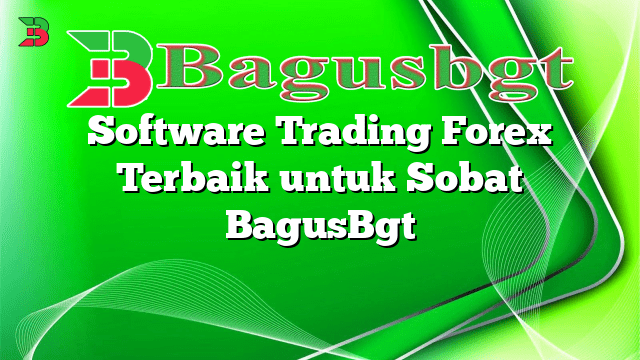Hello readers, welcome to this informative article on leverage in forex trading. In the world of financial markets, forex trading stands out as one of the most popular and lucrative investment opportunities. However, to truly maximize your potential profits, understanding and utilizing leverage is essential.
1. What is Leverage in Forex Trading?
Leverage refers to the use of borrowed funds to amplify potential returns. In the context of forex trading, it allows traders to control larger positions in the market with a smaller initial investment. For example, a leverage ratio of 1:100 means that for every $1 of your capital, you can control $100 in the market.
2. The Benefits of Leverage
Leverage offers several advantages to forex traders:
- Increased Buying Power: With leverage, traders can access a larger portion of the forex market, potentially leading to bigger profits.
- Low Initial Investment: Leverage allows traders to enter the forex market with a fraction of the capital required for traditional investing.
- Flexibility: Leverage enables traders to take advantage of short-term price movements and capitalize on market fluctuations.
3. Understanding Leverage Ratios
It is crucial to comprehend leverage ratios before engaging in forex trading. Common ratios include 1:50, 1:100, and even higher. While higher leverage ratios may seem enticing, they also come with increased risk. Traders must strike a balance between potential profits and risk tolerance.
4. The Risks of Leverage
Although leverage offers the potential for higher returns, it also amplifies losses. It is important to exercise caution and understand the risks involved. Here are some key risks associated with leverage:
- Margin Calls: If a trader’s losses exceed their available capital, a margin call may be triggered, requiring additional funds to maintain open positions.
- Volatility Exposure: Increased leverage exposes traders to larger swings in the market, making them vulnerable to significant losses if the market moves against their position.
- Emotional Impact: Higher leverage can lead to heightened emotions and impulsive decision-making, negatively impacting trading performance.
5. Alternatives to Leverage in Forex Trading
While leverage is a popular tool in forex trading, it is not the only option. Traders can also consider the following alternatives:
- Traditional Trading: Opting for traditional investing in the forex market without leverage reduces the risk of potential losses.
- Forex Options: Using options contracts allows traders to control positions without the need for excessive leverage.
- Risk Management Strategies: Implementing risk management techniques, such as stop-loss orders and proper position sizing, can mitigate the need for excessive leverage.
6. Leverage in Forex Trading: A Comparison
To provide a clear overview, here is a table summarizing the different leverage ratios and their corresponding requirements:
| Leverage Ratio | Required Margin |
|---|---|
| 1:50 | 2% |
| 1:100 | 1% |
| 1:200 | 0.5% |
7. Frequently Asked Questions (FAQ)
Q: Is leverage suitable for all traders?
A: Leverage is not suitable for all traders. It is essential to assess your risk tolerance and trading experience before utilizing leverage.
Q: How can I calculate my potential profits or losses with leverage?
A: You can use the following formula: Potential Profit/Loss = (Leverage Ratio x Capital Invested) – Capital Invested.
Q: What is the maximum leverage available in forex trading?
A: The maximum leverage varies across brokers and jurisdictions. It is important to verify the maximum leverage offered by your chosen broker.
In Conclusion
Leverage in forex trading can be a powerful tool when used wisely. It offers the potential for increased buying power and flexibility, but it also comes with significant risks. Understanding leverage ratios, assessing risk tolerance, and implementing proper risk management techniques are vital for success in forex trading. Choose your leverage ratio carefully, consider alternative strategies, and always trade responsibly.
 Bagus Banget Kumpulan Informasi terbaru dari berbagai sumber yang terpercaya
Bagus Banget Kumpulan Informasi terbaru dari berbagai sumber yang terpercaya


